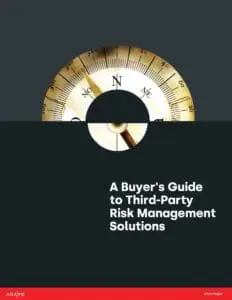
Third-party risk management is a complex discipline, that combined with the scale, complexity, and change dynamics of any Global 2000 organization, can often lead to false starts with technology implementations.
It’s important to get enterprise software purchase decisions right – they are the fulcrum of successful third-party risk programs for the business, they impact on the adoption and performance of many internal users across the enterprise, and they can have an impact on the careers of those selecting them.
But it’s not easy. As we discussed in our White paper: Third-Party Risk Management in the Dynamic of Scale, Complexity, and Change, many organizations first try and default to their legacy ERP or Generic GRC technology platforms to manage their third-party risk programs. Yet, ultimately most fail. The scale, complexity and change requirements of the Global 2000 enterprise cripples them. The result: lost money, time and opportunity. And, naturally, a loss of trust in technology and what vendors can solve for.
This makes it all the more important to understand what capabilities you should be looking for and what questions you should be asking when you are assessing TPRM providers. RFI and RFPs can often become a catch all, with hundreds of questions, but missing the crux of the requirement: is the solution scalable, agile and adaptable.
This often happens because the strategic vision of why the organization needs to purchase a third-party risk management solution is lost amongst the lists of tactical questions from various internal stakeholders.
A new white paper from Aravo solutions outlines some of the key questions that organizations should be asking – within the context of an overarching vision of what a good third-party risk management platform should be delivering, and why.
The white paper looks at the strategic underpinnings of a best practice approach to third-party risk management, including:
The white paper then provides a deep-dive into the seven key areas for review in any RFP or RFI for a third-party risk management solution, including:
Solutions that are adaptable – whether that means integrating new information sources or creating new workflows – are resilient because they are able to change with new requirements as they present themselves. Solutions that go one step further – that actually help organizations manage change better – help make the organizations they are a part of more resilient.
The white paper – with more than 120 questions and points of evaluation – will help organizations keep a strong focus on both their strategy for third-party risk management as well as their tactical requirements when exploring the purchase of a new solution.

Share with Your Friends: